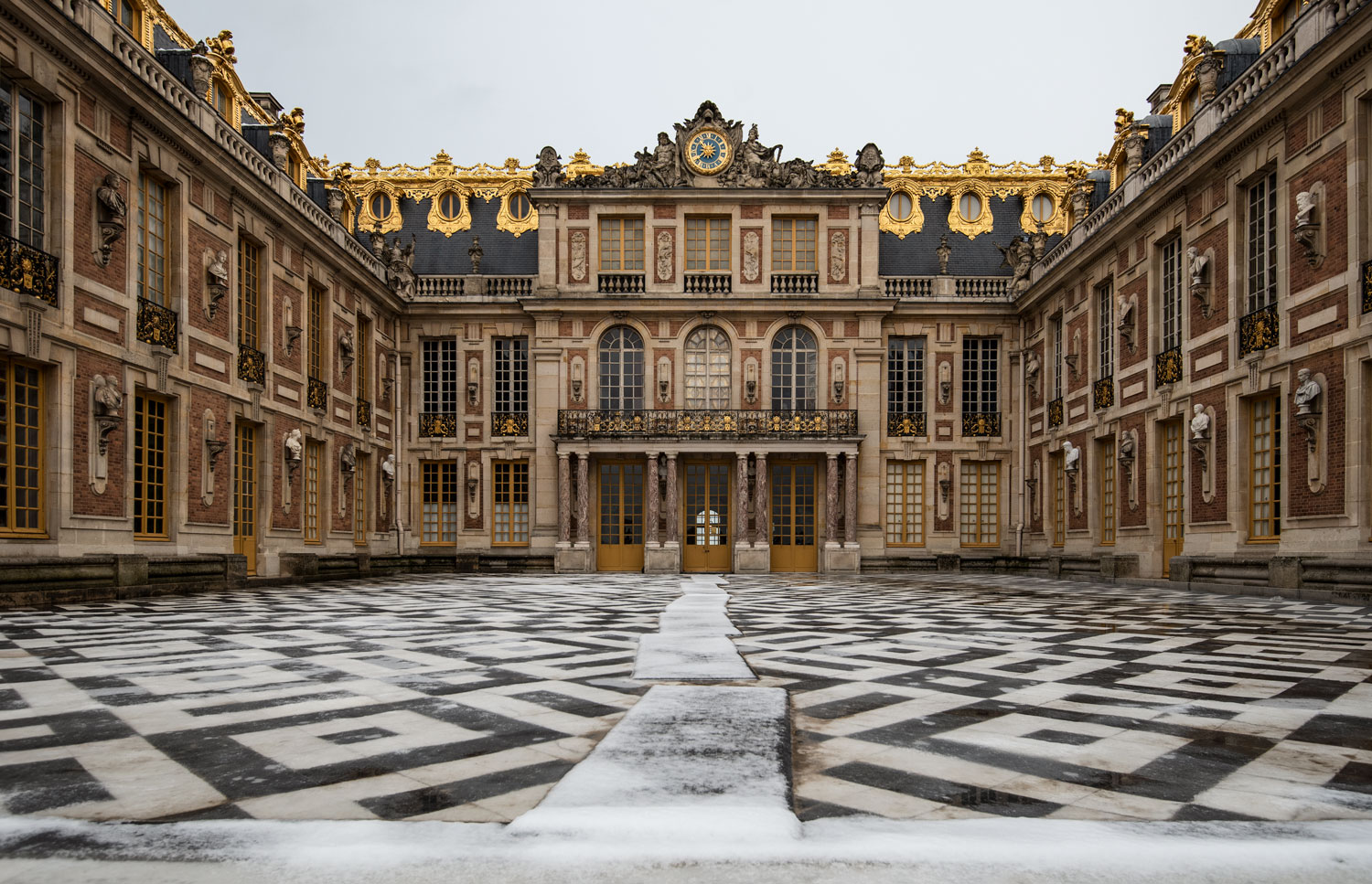Versailles’ Checkered Legacy
Photos by Forrest Anderson
“I’m going to Paris and I think I’ll stay at Versailles.”
This travel itinerary became a reality this summer for travelers willing to fork out a minimum $2,077 a night to stay at a newly-opened luxury hotel at the Palace of Versailles.
Such a social media post would be considered the epitomy of what Chinese social media calls Versailles literature, posts in which the writer tries to casually show off an extravagant lifestyle.
Since the days of Louis XIV, the Sun King who created the Palace of Versailles and cemented Paris’s position as the arts capital of the world, Versailles has been associated with heights of extravagance, high fashion and ostentatious display. International fascination with the palace southwest of Paris shows no signs of abating.
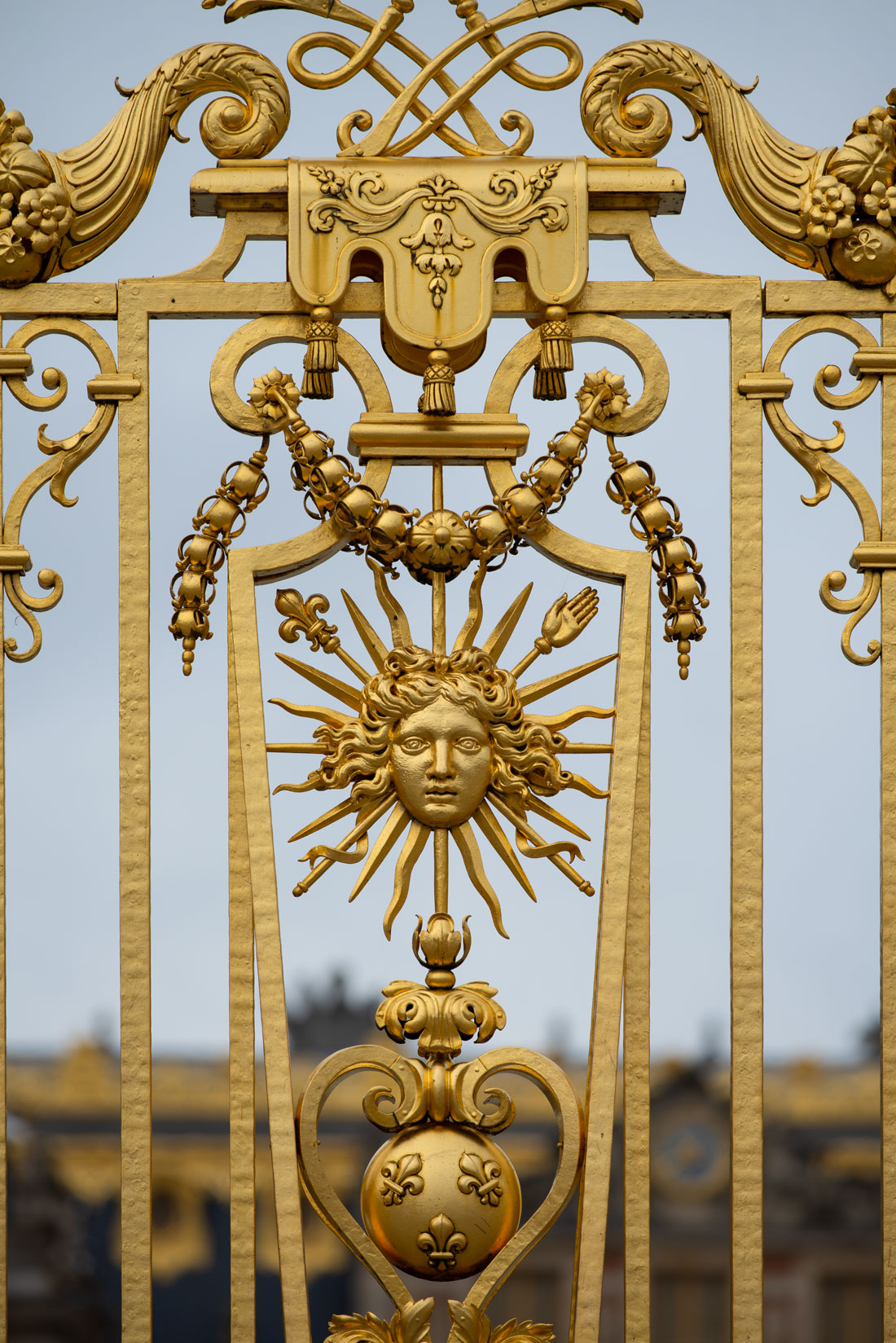
Versailles continues to inspire the building of extravagant mini-Versailles mansions with beautifully groomed grounds, fountains, heated pools and limestone fireplaces. The storied palace has inspired a plethora of films and other media. No less than 11 U.S. towns and several townships and neighborhoods in American cities are named Versailles, reflecting long-standing American affection for the palace. When tennis star Serena Williams’ three-year-old daughter toured Versailles wearing a Disney-style yellow princess gown recently, her photo on Instagram got close to 100,000 likes. There are musical acts named Versailles, a luxury American car was named the Lincoln Versailles, and a chain of restaurants are named Versailles.
The first hotel on the grounds of Versailles, Airelles Château de Versailles, Le Grand Contrôle, opened in June in two buildings in the south wing of the palace constructed in 1681 by King Louis XIV's architect. The hotel’s rooms have authentic 17th and 18th century antiques and historical artifacts acquired upholstered in period patterns. The only reproductions are bed frames and restaurant armchairs. Restoring the buildings cost $50 million. The hotel pays a steep annual sum for use of the site.
Breakfast at the hotel begins with golden-colored broth poured into a crystal cup by a staff member wearing a floral coat and Burgundy breeches as he explains that the king began each day with a glass of vegetable broth. A server in a period costume places French pastries on the table.
Guests are transported back to 1788, the year before the French Revolution. There are no televisions in the rooms unless guests request them, and leather-encased iPad Pros and mobile phones used for room service are in an elegant leather box on the antique desk. The state-of-the-art spa resembles traditional Roman baths used by the court of Versailles.
Guests can explore the palace grounds on morning walks with horticulturists, ride on a boat on the Grand Canal, and take private before- or after-hours tours of key spots such as the Hall of Mirrors or the Queen’s apartments. Photo shoots in period costumes can be arranged for a fee. Trays of financiers and macarons are on silver platters in corridors, common sitting rooms and salon-style lounges.
The main restaurant is led by renowned chef Alain Ducasse, and is eaten on gold and silver tableware. The menu takes its inspiration from the royal court. Guests serve themselves main courses from elaborate, heaping platters. Servers stage short theatrical performances. A royal buffet brunch follows a tradition of Le Grand Couvert, in which the king and queen dined in front of the public. There is a Marie Antoinette-themed afternoon tea.
In downtown Paris, another immersion in Versailles-style opulence opened this year in the form of a museum called the Hôtel de la Marine, overlooking the square where Louis XVI and Marie Antoinette were beheaded.
The museum dates back to 1755, when the royal square now known as Place de la Concorde was built. The repository for the royal furniture collections, crown jewels, tapestries and precious objets d’art was on the square. Starting in 2015, the building has been meticulously restored using archival records and royal inventories from the Louvre, Versailles and other sources.
Up to 18 layers of paint were removed to get down to the original interiors in the building. Bas reliefs, gilded decorations, inlaid parquet and sculpted marble fireplaces were found. Eighteenth century damask and textiles were purchased at flea markets and through antique dealers. The table on which France’s abolition of slavery was signed was located.
How did Versailles and its style become such a big deal?
French King Louis XIII went to the village of Versailles for his first hunting trip in 1607. Crowned king in 1610, he next visited Versailles in 1621. Versailles was Ideally situated between his principal residence at Saint-Germain-en-Laye and Paris and was surrounded by woods filled with wild game. In 1623, the king decided to build a small hunting lodge there, which he first used in 1624. He rebuilt the lodge between 1631 and 1634 and also bought part of the fiefdom of Versailles in 1632.
The king’s son, Louis XIV, was sent to Versailles at age 3 in 1641 to escape a smallpox epidemic. His next known visit was in 1651, when, as King Louis XIV, he went there to hunt. From then on, the king often went to Versailles, becoming so fond of it that he carried out a stream of building projects there including the forecourt, pavilions, a south and north wing, the royal chapel and other projects by 1710.
King Louix XIV (1638-1715) created the Versailles phenomenon by turning the hunting lodge into the most extravagant court ever. He spent vast amounts of taxpayer money building Versailles’ more than 2,000 rooms, gardens, the Trianon estate, fountains, baths and zoo. The palace is considered one of the greatest achievements of 17th century art. Meanwhile, most of his subjects lived in wood and stone hovels. Like many people with French ancestry, I take his extravagance personally since my ancestors were vassals to a castle who eked out a precarious living on a rocky mountainside during this era.
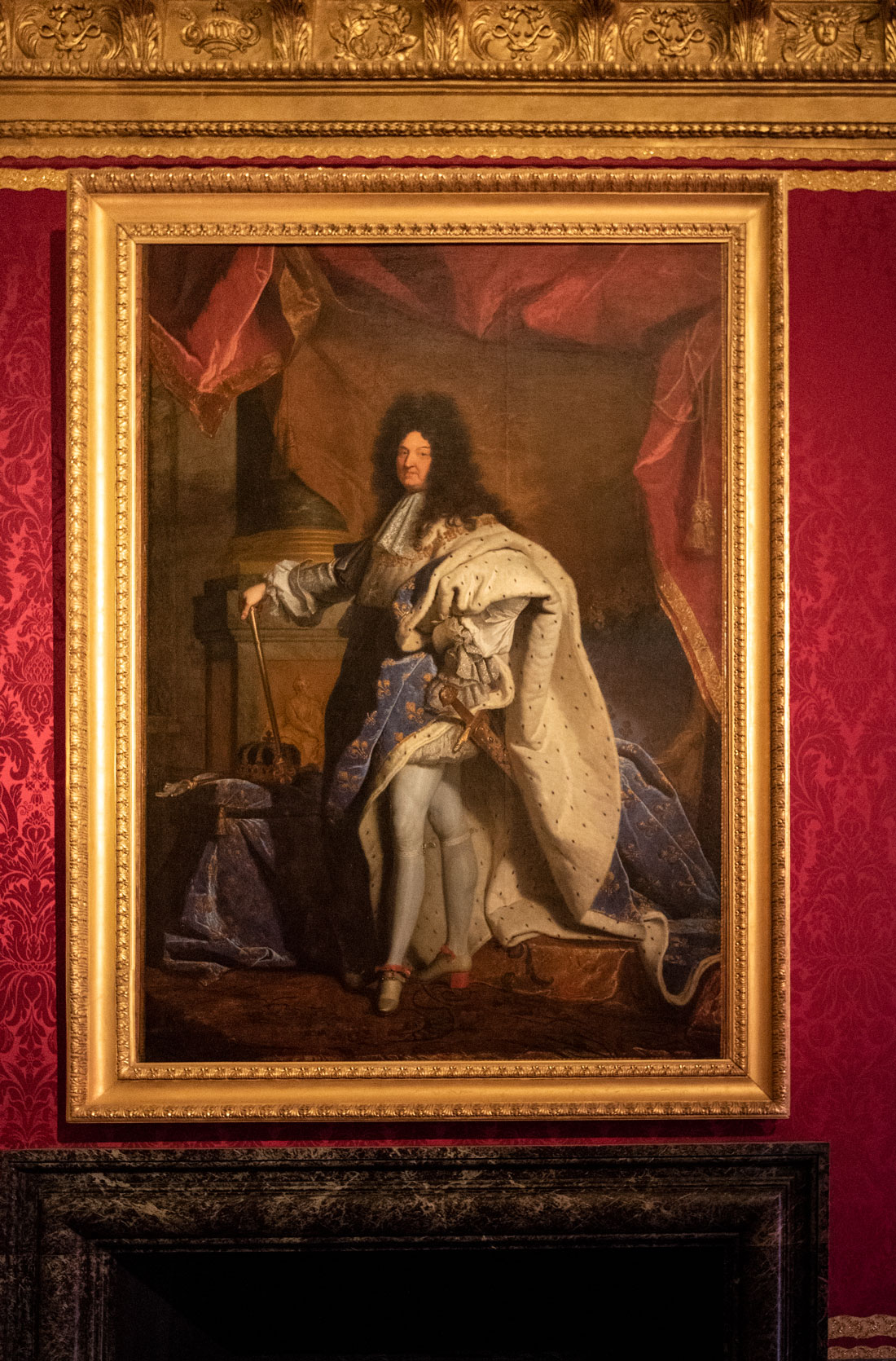
Louis XIV’s expansion of Versailles was intended to neutralize the power of the French nobility by pulling them out of their castle strongholds and making them into courtiers at Versailles. The result was a palace full of 3,000 people, including aristocrats who had nothing to do except gossip and spend huge amounts of money on elaborate ball gowns, gambling and other amusements. They spent their days at banquets, balls, parades, court ceremonies and concerts on which an enormous amount of money was spent. Court intrigue, jockeying for influence, bribery, graft and embezzlement were rife.
Versailles is the chief remaining evidence of the splendor of the Sun King, interpreted in lavish, gilded French Baroque architecture. It is the premier example of French Baroque architecture, one of the most ornamental architectural styles. The word Baroque was once a derogatory word meaning noisy, eccentric and excessive. The style emerged in Italy in the late 16th century during the Counter-Reformation, when the Catholic church launched a campaign to appeal to its followers through elaborate music, art and architecture. The style spread through Europe. French Baroque was combined with classical influences at Versailles.

The palace inspired a mini-Renaissance of interior design and decorative art in the 17th and 18th centuries that influences those fields today. Versailles was crafted specifically as a symbol of the absolute power of the French monarch. The palace garden is geometric, a symbol of the king’s control, with canals that mirror the sky and thus unified heaven and earth under his control. Louis XIV’s gardeners and architects created the first lawns there, called tapis vert or “green carpet”. Lawns as a status symbol caught on among aristocrats and later spread to America, where they became popular around suburban houses.
Baroque architects at Versailles created a three-story chateau with a marble courtyard, columns and two wings containing apartments for the king and queen and living and working space for other royals, government ministers, aristocrats, diplomats and civil servants. Versailles became the apex of European palace architecture, with immaculate gardens, beautiful views, fountains and statues.

A total of 357 expensive mirrors were used in the Hall of Mirrors. The interior design was legendary in scope, quality and expense, with the finest furnishings, porcelain and sculpture. Lavish displays of silver, including solid silver furniture, initially decorated some areas but were melted down to finance military campaigns.
The astronomical expense simulated a huge expansion of French arts and crafts, led to the emergence of Rococo art, and paved the way for Paris to become the arts capital of the world.
As the seat of government, Versailles was the site of many important events, including marriages between European royal houses, the visits of ambassadors from farflung places such as Siam and Persia and visits by the king of Spain and Peter the Great. Mozart performed at the palace as a child prodigy.
After Louis XIV died in 1715, however, the court abandoned Versailles for Vincennes.
In 1722, the young Louis XV returned to Versailles and created small chambers where he felt more at ease than in grand public spaces, but he often resided at other palaces. He refurbished his apartments at Versailles and completed the Royal Opera House there, which had been started by Louis XIV. An assassination attempt was made on Louis XV’s life in 1757 at Versailles. Louis XV contracted smallpox in the Trianon at Versailles and was moved to the palace where he died in 1774.
By the time Louis XV had become king, the public had begun to turn against the monarchy. Louis XV didn’t help things with his sordid love affairs. By the time his son Louis XVI was crowned in 1774, Versailles had a vile reputation.
Louis XVI’s marriage to Marie Antoinette at the Royal Opera House was one of the grand events to take place at Versailles. Louis XVI spent most of his time in Versailles. He was fond of his wife and in 1774 offered her the Petit Trianon, built by Louis XV for Mme de Pompadour. Marie-Antoinette made it her private domain. She retreated there from the formality of the main palace to spend time with women friends. They wore informal superfine muslin dresses considered scandalous by many French people. At twilight, Marie Antoinette would direct the lifting by a series of weights and pulleys of two large Venetian mirrors to fill the window panes so that the mirrors would provide sparkling reflections of the candlelight in the room. At a time when average per capita income in France was about 250 livres tournois per year, the engineer received 12,500 livres tournois to build the system.
Marie Antoinette was reviled for her extravagant spending on clothing, which cost millions in current dollars. She built a fake country village for her amusement, complete with a mill, dairy, marble tables and rare porcelain made to look like wooden buckets.
A famous hot air balloon experiment was staged at Versailles, where King Louis XVI had workshops and labs for scientific research.
As the economy tanked in the 1780s, the palace became a symbol of the crown’s indifference to the plight of its impoverished subjects. Protests were common, and pamphlets denounced the debauchery of Versailles with reports such as a protest by 2,000 starving workers outside Versailles in 1786 while a sumptuous ball proceeded in the palace.
When discontent about the court’s overreach broke out into the French Revolution, Versailles as the center of the corrupt political system was one of the first targets.
Louix XVI, faced with the grave economic problems, called a meeting of the Estates General at the palace in 1789. Twelve hundred representatives of the three orders that made up the nation – clergy, the nobility and the third estate – attended the meeting. On June 20, 1789, deputies of the Third Estate met with members of the clergy and nobility in the Royal Tennis Court at Versailles. They swore what became known as the Tennis Court Oath, vowing not to dissolve the session until they had given France a written constitution.
Three days later, the army tried to evict the deputies from the Royal Tennis Court. One deputy, Honoré Gabriel Riqueti stepped forward and proclaimed: “We are here by the will of the people, and only bayonets will remove us.”
Hundreds of starving people stormed Versailles early in October 1789, beating and beheading palace guards and displaying one head on a pike. A bloodied guard ran ahead of them to warn the half-dressed Marie Antoinette, who escaped to Louis XVI’s rooms. The couple fled the same day to the Tuilleries Palace in Paris as the protesters swarmed into the palace. The king and queen never returned to Versailles, and were executed in 1793, ending the absolute monarchy known as the Ancien Régime.
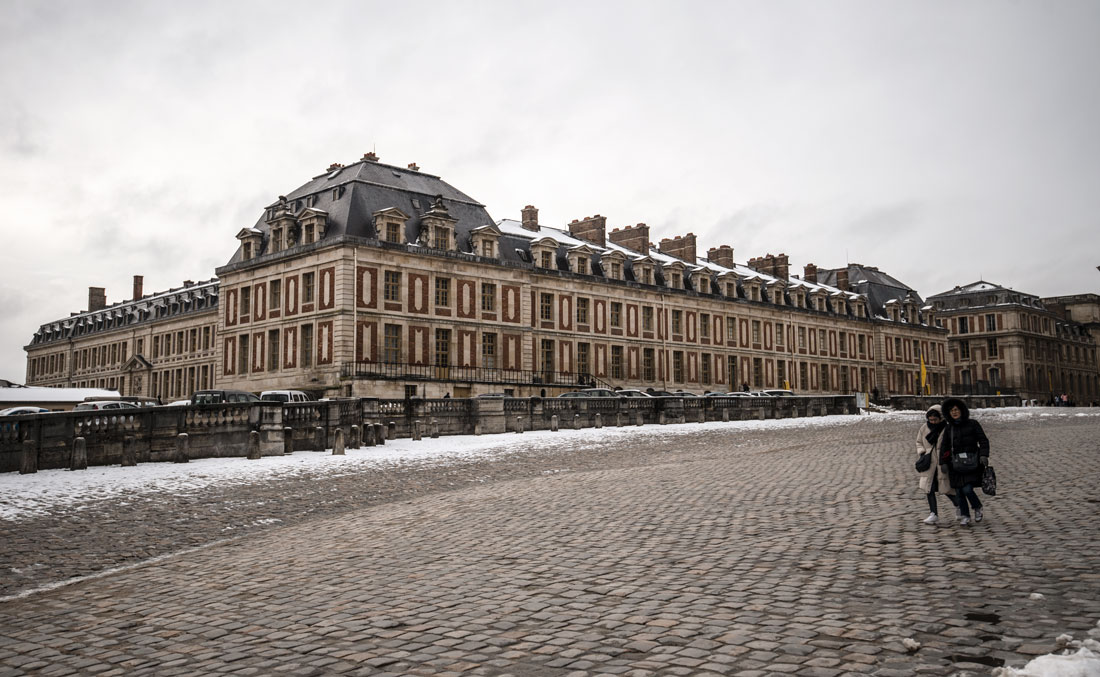
The Palace of Versailles came through the revolution relatively unscathed, although the furniture was auctioned off. Some parts of the building were used for arms manufacturing and other purposes.
In 1793, the Central Museum for the Arts opened in Paris, and masterpieces that had decorated the Versailles were transferred to the Louvre. Versailles became a repository for items confiscated from migrants, convicts or religious institutions during the revolution. In 1796, a museum opened at Versailles. A science room and library were set up, and the State Apartments and Queen's Apartments were used to display paintings, vases and other collectibles placed on marble tables.
In 1797, Versailles was established as a museum of French art. Paintings and antiques by foreign artists were transferred to other museums and French works were sent to Versailles. This museum was short lived, opening in 1801 and closing in 1803.
In 1799, a coup d'état overthrew the Directory that had ruled France as a republic since 1795. Napoleon Bonaparte became head of the new government and was crowned Emperor in 1804. Napoleon eschewed the palace and settled at the more modest Trianon on the grounds. Versailles has an enormous painting of Napoleon being crowned emperor at Notre-Dame Cathedral in Paris.
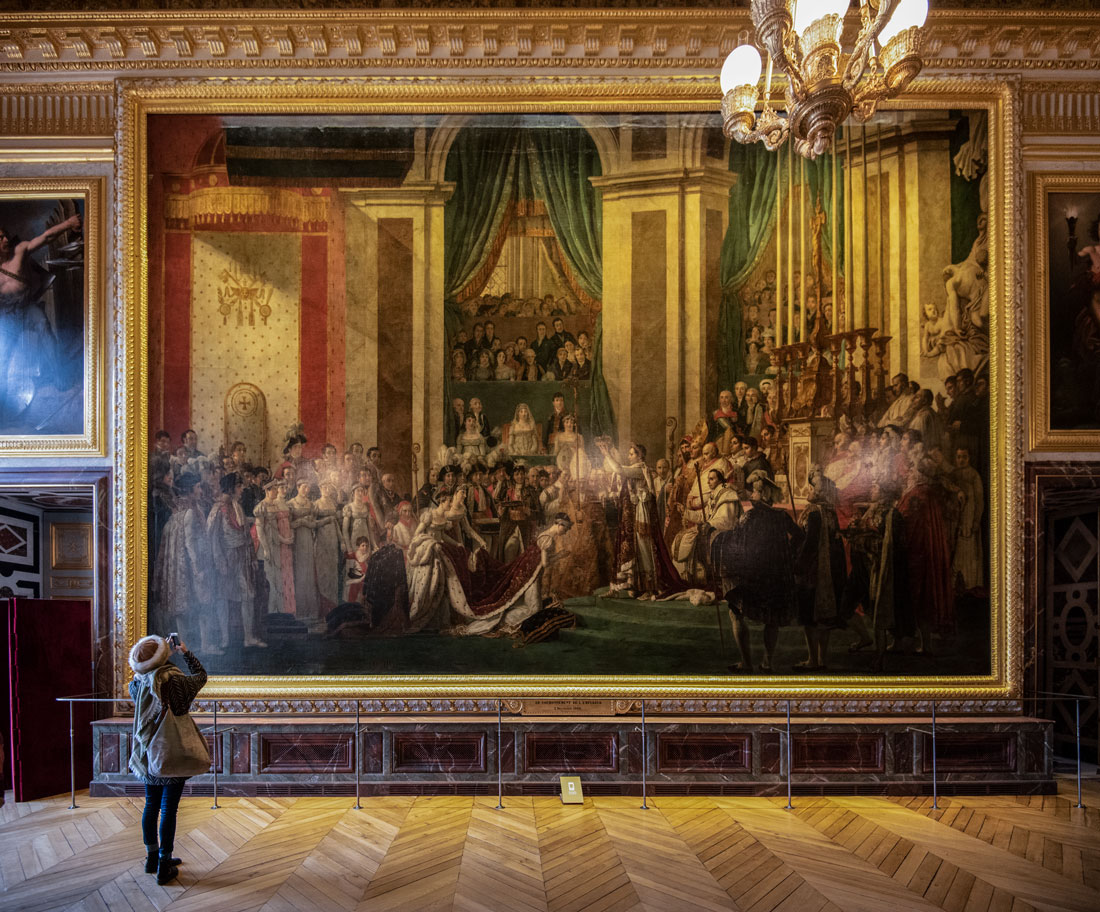
The crowning of Napoleon and his wife at Notre-Dame Cathedral, Paris.
Under Napoleon, France warred with her neighbors and the French Empire was weakened until Napoleon was forced to abdicate after his defeat at the Battle of Waterloo. This paved the way for a constitutional monarchy under King Louis XVIII, Louis XVI’s brother. He refused to live at Versailles. He died in 1824.
Charles X had lived before the Revolution in a large apartment at Versailles. He succeeded his brother, Louis XVIII, to the throne. In an attempt to restore the traditions of the Ancien Régime, he had a grand coronation at Reims cathedral in 1825. The coach in which he rode to his coronation is on display in the Gallery of Coaches near the palace. He was overthrown by the July Revolution in 1830 and died in exile in 1836.
Louis-Philippe I became king next, but took the title King of the French to distance himself from the former kings of France. He promised a new regime inspired by the British parliamentary monarchy and swore an oath to abide by the Constitutional Charter. Louis-Philippe did away with former court spaces and converted the palace to a museum dedicated to “all the glories of France” in an attempt to tie the monarchy with a parliamentary government. His Gallery of Battles, inaugurated in 1837, embodies his attempt to unify French history. He was toppled in an 1848 revolution after he came to be seen as out of touch with the public.
The Second Republic was established with Louis-Napoleon Bonaparte, the nephew of Napoleon I, as a deputy and subsequently president of the Republic. The Second Republic introduced universal male suffrage and abolished slavery in French colonies. An 1851 coup d’etat transformed his presidency into a new imperial regime, the Second Empire. Napoleon III sought to renew the court’s past splendor, using Versailles to host foreign heads of state including British Queen Victoria.
In July 1870, France declared war on Prussia. Napoleon III was defeated at the Battle of Sedan in September 1870 and forced to surrender to Wilhelm I, King of Prussia. The defeat forced Napoleon III to abdicate and marked the end of the Second Empire and advent of France’s Third Republic.
The Prussians invaded France and proclaimed the German Empire in the Hall of Mirrors at Versailles. The articles of the armistice were signed there in 1871.
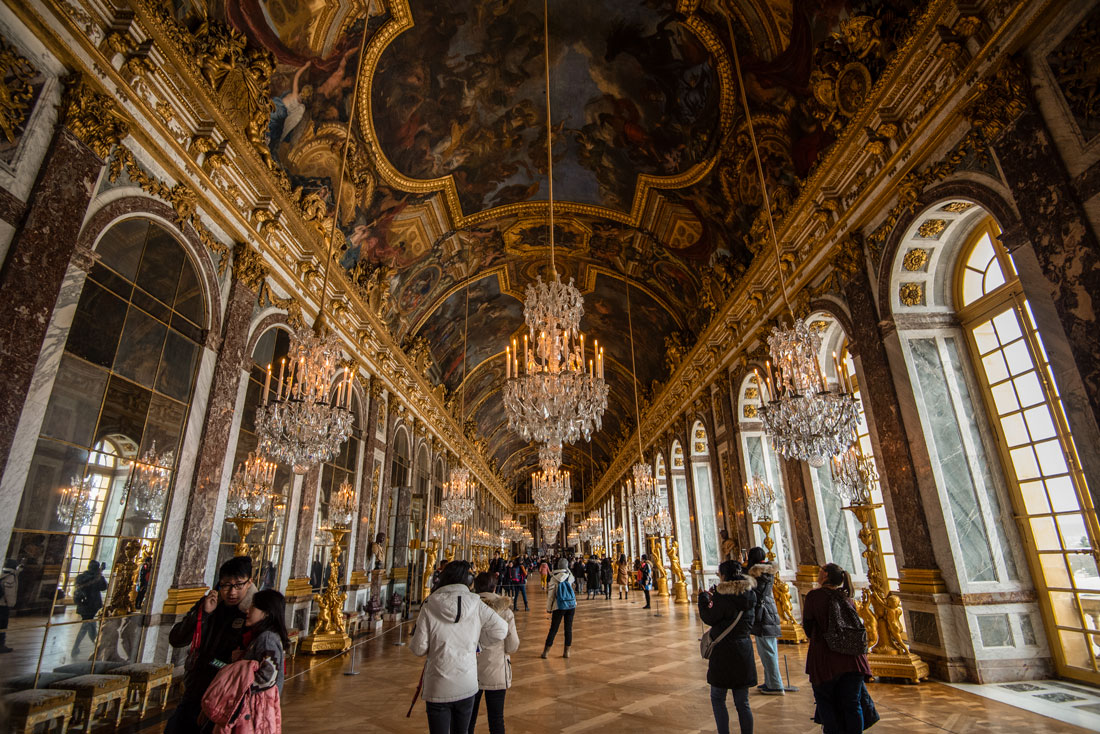
The Hall of Mirrors.
The Third Republic was born in Versailles as the Parliament took refuge there after the Paris Commune. Between 1873 and 1954, fifteen presidential elections were voted on by Parliament meeting at Versailles.
By 1889, the Palace of Versailles had come to be seen as a symbol of France’s heritage. The palace inspired imitations worldwide.
How did Versailles, the seat of an absolute king, become an important site in American history?
France lost Canada and the Indies to England in 1763. The American War of Independence presented an opportunity to avenge France’s loss and curb England’s power by helping the American rebels.
French General La Fayette, a close friend of George Washington’s, persuaded the U.S. Congress to send a delegation to Versailles. The delegation, made up of Benjamin Franklin and two diplomats, received a hero’s welcome in France. A treaty was signed in February 1778 marking France’s entry in the U.S. colonies’ war against England.
On March 21, 1778, the American delegation was introduced into Louis XVI's Great Chamber at Versailles. Louis XVI presented the delegation with a note of goodwill for the Congress. He sent 6,000 troops who contributed to the defeat of the English at Yorktown on Oct. 17, 1781. A huge painting commemorating the battle, the Siege of Yorktown, is in the Gallery of Battles at Versailles.
After the war, a peace treaty with England was signed at Versailles at the Foreign Affairs Building, on the Rue de l'Indépendance Américaine, in 1783.
During World War I, Versailles artworks were protected from the threat of bombing, tours for wounded soldiers were arranged, charitable activities were held in the gardens and the palace was used for political events. After the war, the victorious Allies organized the Paris Peace Conference to establish the terms of peace. The conference culminated in five major treaties and the creation of the League of Nations. One of the treaties, the Treaty of Versailles, demanded that Germany disarm its army and navy, concede pre-war territory, and pay extensive reparations for the war. This treaty was signed in the Hall of Mirrors at Versailles by French Prime Minister Georges Clemenceau, U.S. President Woodrow Wilson, British Foreign Secretary Arthur Balfour and Italian Foreign Minister Sidney Sonnino. The treaty sowed the seeds for the second global conflict, World War II.
American philanthropist John D. Rockefeller visited Versailles in 1923 to attend a gala organized to raise money for the palace’s restoration. At the time, the palace was delapidated, with rain pouring through the roof, overgrown gardens and dry fountains. Rockefeller a year later volunteered to finance the restoration and is credited with having saved Versailles.
“An immense beauty was disappearing and I was devastated,” he wrote in his memoirs. Rockefeller personally oversaw the restoration, which was completed in 1936. He inaugurated a custom of philanthropy and patronage that became essential to the site’s finances.

The King's bedroom.
In 1939, the palace was prepared again for war - the state apartments walled up, the museum collections stored away and the windows covered in wooden panels.
German troops invaded the palace in 1940, walking through the Hall of Mirrors where the treaty ending World War I was signed. The Nazi flag flew over the palace, and Nazi Propaganda Minister Joseph Goebbels visited the palace. German troops occupied peripheral buildings. In 1944, the estate was hit by Allied bombs, but was not seriously damaged. It was liberated from the Nazis on Aug. 25, 1944. American entertainer Fred Astaire sang to GIs at Versailles after the liberation.
U.S. President John F. Kennedy and his wife Jacqueline Kennedy were hosted by French President Charles De Gaulle at a gala evening at Versailles during their famous trip to France in 1961.
In 1998, the American Friends of Versailles was organized to encourage donations to the palace’s upkeep from American philanthropists. Some 16 percent of international visitors to Versailles are American. The Queen’s Grove at Versailles was restored recently with the help of American contributions using 150 Virginia tulip trees, which were one of Marie Antoinette’s favorite trees. The grove will be dedicated to French-American friendship.
The collections of Versailles include more than 60,000 works that provide a chronological overview of the French history from the Middle Ages to the late 19th century. Those from the 18th century are among the most perfect and celebrated works of the Louis XV and Louis XVI styles. Versailles is considered the epitomy of the French-style garden. French etiquette, music, theatre and the decorative arts reached a pinnacle there.
Versailles’ influence has gone far beyond architecture and art. The first recognized Paris Fashion Week was a 1973 fundraiser at Versailles to raise money for repairs on the palace. American and Parisian designers attended what came to be called the Battle of Versailles. The event was a landmark because the American models included African Americans, the first time black models had walked a French runway. The event sparked the internationalization of fashion, elevated American labels and transformed runway shows.
See more photos of Versailles
Check out these related items
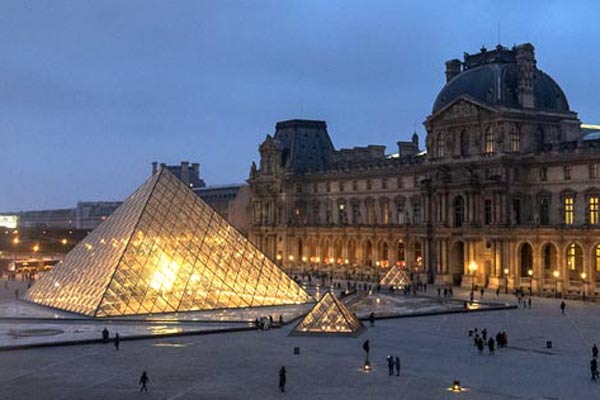
What is the Louvre?
The former palace, the world's largest museum, music video and fashion show venue, and global brand has never been more cool.
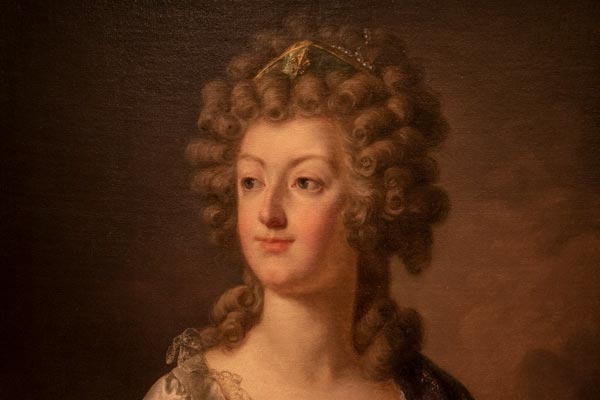
Marie Antoinette and Barbie
Since she was guillotined in the French Revolution, Marie Antoinette has become one of the most popular icons worldwide.
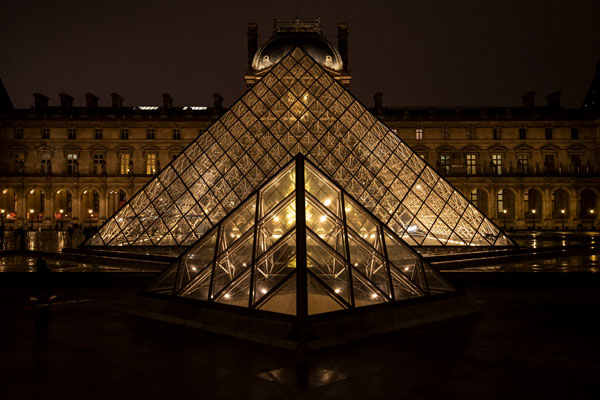
Take a Break at the Louvre
Take a few minutes to stroll through the Louvre and rejuvenate your creative reserves.

Treasure Room and Two Palaces
In the French palace at Fontainebleau is a treasure room of dazzling artifacts taken by the French army from a palace in Beijing.
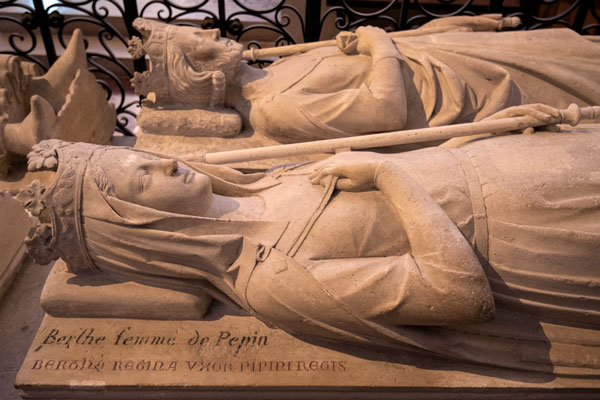
Resting Place of Kings
France's dazzling royal necropolis, the Basilica of Saint Denis, is also the birthplace of Gothic architecture.
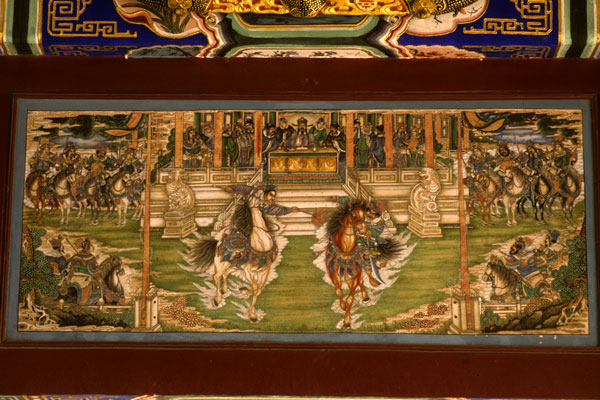
The Summer Palace
The Summer Palace, the most famous and heartbreaking of China's glorious imperial gardens, highlights dilemmas in the nation’s past.
